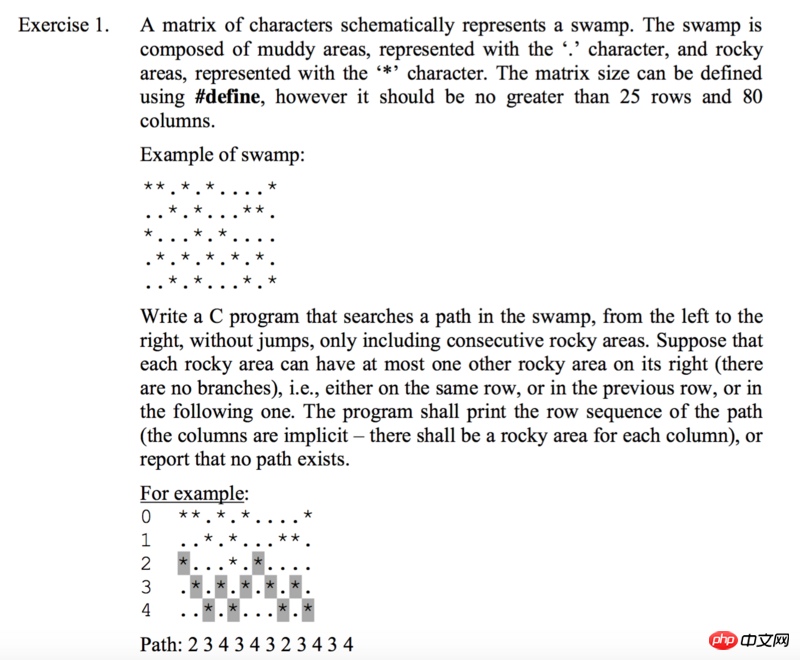这是原题目,后面附上我的代码,刚刚接触DFS,不是很熟练,求教育……谢谢!!!TUT
这是题目,我大概概括一下
用'※'和'.'组成如图所示的矩阵字符串,'※'是石头,'.'是河水,过河只能踩着石头过,而且必须是你所在的石头的下一竖列的正前方或者最近的两个斜对角的石头,用example里那种纵向数字表示石头的标号,求出一个过河的路线,打印出路线经过的石头的标号
int j=0;
char Q[80];
int x=0,y=0,res=0;
char river[5][11],visited[5][11];
void dfs(y,x){
Q[x]=y; //储存每一步落脚石纵向坐标的数组
visited[x][y]=1;
int dx=1;
for (int dy=-1; dy<=1; dy++) {
int ny=y+dy,nx=x+dx;
//如果nx\ny在河的范围内,是石头,而且没有被访问过,就递归
if (nx>=0 && nx<11 && ny>=0 && ny<5 && river[ny][nx]=='*' && visited[ny][nx]==0) {
dfs(ny, nx);
}
}
//如果没有合适的落脚石,而且当前在第一竖列,就向下继续寻找第一竖列未被访问的石头,找不到就结束dfs函数
if (x==0) {
for (j=y+1; !strchr(&river[j][0], '*')&&visited[j][0]!=0&&j<5; j++);
if (j<5) {
dfs(j, 0);
}else return;
}
//如果没有合适的落脚石,且不在第一竖列,就返回上一块落脚石重新选择
dfs(Q[x-1], x-1);
return;
}
int main(){
for (int m=0; m<11; m++) {
for (int n=0; n<5; n++) {
visited[n][m]=0;
}
}
//输入五行字符
for (j=0; j<5; j++) {
printf("请输入第%d行",j+1);
gets(river[j]);
}
//找到第一竖列第一个'*'
for (j=0; j<5; j++) {
if(strchr(&river[j][0], '*'))
break;
}
dfs(j,0);
if (strlen(Q)==11) {
//打印函数求得的数组
for (int i=0; i<strlen(Q); i++) {
printf("%d",Q[i]);
}
}
else{
printf("no solution");
}
return 0;
}
Your recursive writing...is really like an infinite loop...
In the recursion of DFS, at least one value must be returned to perform recursive operation analysis. For example, this question should return whether the node can be passed through (boolean).
When recursing, first determine whether the current node can be walked. If it cannot be walked, it will return false directly. If it can be walked, it will be dispersed to the connected nodes. It will return whether there are nodes that can be walked through in the connected nodes. (At this time, the recursion continues, and the walked through No way into recursion).
Returning when you can’t go the same way is achieved by recursion itself by unwinding the stack. You actually walked back and then pushed back onto the stack. You are also drunk
Why is it so complicated?
See https://segmentfault.com/q/1010000004191381
’s answer